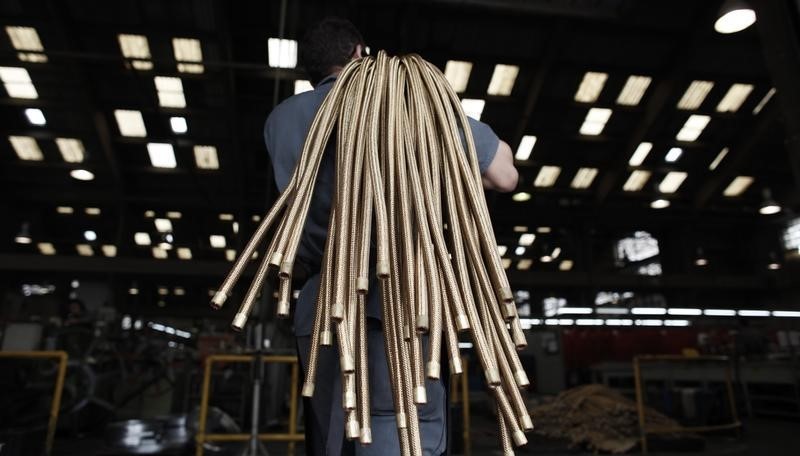By Lucia Mutikani
WASHINGTON (Reuters) - New orders for U.S.-made goods unexpectedly rose in May, pointing to a strengthening manufacturing sector, but business spending on equipment continued to show signs of slowing.
Factory goods orders increased 0.4 percent amid strong demand for machinery, the Commerce Department said on Tuesday. Data for April was revised up to show orders falling 0.4 percent instead of the previously reported 0.8 percent decrease.
Economists polled by Reuters had forecast factory orders to be unchanged in May. Orders increased 8.7 percent on a year-on-year basis in May.
Manufacturing, which accounts for about 12 percent of the U.S. economy, is being boosted by strong domestic and global demand, but growing shortages of workers as well as import tariffs are starting to strain the supply chain.
Prices of U.S. Treasuries were trading largely higher while U.S. stocks rose. The dollar (DXY) fell against a basket of currencies.
The Trump administration has imposed tariffs on a range of imported goods, including steel and aluminum, to protect domestic industries from what it says is unfair competition from foreign manufacturers.
President Donald Trump's "America First" trade policy has left the United States embroiled in tit-for-tat tariffs with its major trading partners, including China, Canada, Mexico and the European Union.
An Institute for Supply Management (ISM) survey of manufacturers published on Monday showed bottlenecks in the supply chain, with a measure of supplier deliveries hitting its highest level since May 2004.
Manufacturers said the tariffs and "lack of predictability" of trade policy were causing "general business instability" and were a "drag on growth for investments." They also complained about an acute shortage of workers, especially truckers, and some manufacturers said transportation costs had "gone through the roof" as a result.
MACHINERY ORDERS RISE
In May, orders for transportation equipment fell 1.1 percent, weighed down by a 7.0 percent plunge in the volatile orders for civilian aircraft. Transportation orders declined 6.1 percent in April.
Orders for motor vehicles rose 0.3 percent in May.
Orders for machinery increased 1.2 percent in May, extending April's 1.7 percent surge. That reflected an 8.9 percent jump in orders for industrial machinery. Demand for mining, oil field and gas field machinery fell 3.9 percent.
There were also declines in orders for primary metals, fabricated metal products as well as electrical equipment, appliances and components, and computers and electronic products. Unfilled orders at factories increased 0.5 percent in May while inventories rose 0.2 percent. The unfilled orders-to-shipments ratio fell to 6.68 from 6.73 in April.
The Commerce Department also said orders for non-defense capital goods excluding aircraft, which are seen as a measure of business spending plans, rose 0.3 percent in May instead of falling 0.2 percent as reported last month. Orders for these so-called core capital goods jumped 2.0 percent in April.
Shipments of core capital goods, which are used to calculate business equipment spending in the gross domestic product report, rose 0.2 percent in May instead of dipping 0.1 percent as reported last month. Core capital goods shipments increased 0.8 percent in April.
Business spending on equipment is slowing after double-digit growth in the second half of 2017. The moderation in business spending on equipment could undercut the White House's argument that lower corporate tax rates would boost investment.
Some companies like Apple Inc (O:AAPL) have used the tax windfall for share buybacks and dividends.

Morgan Stanley (NYSE:MS) reported last week that its Capex Plans index declined in June for a third straight month. It said while the index still indicated a positive outlook for equipment spending in the second half of the year, it was past its peak.
